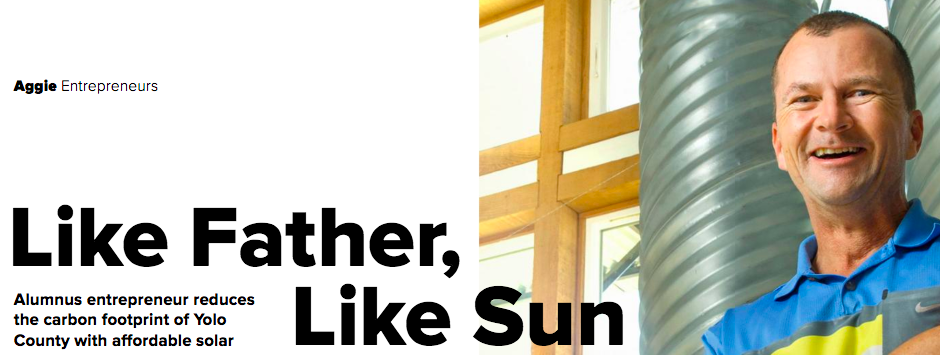Our community cares. A lot, about a lot of stuff. With conviction, unfortunately, there’s oftentimes confusion. Valley Clean Energy (VCE) is a contemporary example.
On April 18, we provided our perspective regarding VCE. In short order, it became the most-read blog post in the history of our site. Again, lots of curiosity (and some confusion), especially via several NextDoor threads.
As we originally opined, if you do not have solar, VCE is a no brainer: Do it (read: do not opt out) and you’ll save a few bucks and enjoy cleaner electricity. Nothing changes with your service — PG&E still manages the grid and bills you. There’s no downside (unless you’re an anti-government conspiracy theorist). Effective June 1, you were enrolled in VCE … enjoy!
Back in April, we were less definitive about VCE for the ~7,000 NEM (net-energy metering, or solar) customers in Davis, Woodland and unincorporated Yolo County. At that point, our recommendation was to love the one you’re with: Stick with PG&E until a few details (read: our concerns) were ironed out. Thereafter, we invested considerable time working with VCE staff to mitigate our concerns and improve VCE’s net-metering program. We also recommended they put the program on hold.
Fortunately, VCE was all ears and brains: They tabled the NEM program, listened to our concerns, analyzed our recommended changes, and revised their net-metering program. Then, they held public forums in Davis and Woodland … more than 90 people attended each. VCE is diligently doing the right thing.
We reached out to Jim Parks, Director, Customer Care and Marketing with VCE, for his perspective:
Here is what we are proposing, pending VCE Board approval in September.
- Residential NEM customers will keep their annual billing cycle unless their annual balance exceeds $500. Then they will go to monthly billing.
- NEM customers will retain their existing true-up date.
- VCE pays 1 cent per kWh more than PG&E for excess energy on a monthly basis. This will roll over as credits during excess generation months and will be trued-up on the annual true-up date if needed. Over $100 credit balances will be paid to customer. Under $100 balance will roll over as a credit.
- For excess energy at the end of the year, VCE pays what PG&E pays (wholesale) plus 1 cent per kWh, providing a financial benefit to NEM customers.
- The transition from PG&E to VCE will occur on the customers true-up date in 2019. This means that NEM customers will be moving to VCE over the course of the entire year, depending on their true-up date.
The transition from PG&E to VCE will be seamless to NEM customers and they will automatically receive the higher incentives that VCE provides. Customers also receive other VCE benefits including choice of providers, local control, higher levels of green and carbon-free energy, and reinvestment in the community.
Thanks, Jim. Count us in.
And, a final note: This process of rapid improvement and adaptation would not occur with an investor-owned utility. VCE listened to its constituents, applied common sense and logic, and improved their solar program … in a matter of months. Yet another reason why local control makes sense, let alone the virtues of reducing utility bills and our carbon footprints.
Feel free to contact us or stop by if you’d like to discuss further.




